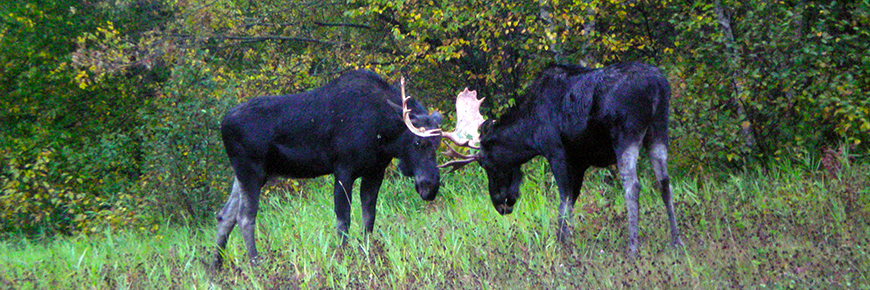
Brett Smith
Wildlife viewing
Riding Mountain National Park
The chance of seeing wildlife is one of the most exciting things about visiting Riding Mountain National Park. It is important to treat wild animals with respect. Approaching too closely threatens their survival. Once wildlife become accustomed to being around people, they are in danger of losing the very thing that makes them special – their wildness.
Rules & regulations
Please treat the landscape and its inhabitants with respect; stay on established trails to avoid trampling vegetation and always give wildlife plenty of space. Photographers who travel the park in search of good photo opportunities have a special responsibility to wildlife and fellow visitors. If you don’t have a telephoto lens (at least 300-400 mm), show the animal in its natural surroundings.
- Do not surround, crowd or follow an animal.
- Never put people (especially children) at risk by posing them with wildlife.
- Do not stalk or pursue wildlife.
- Never follow an animal into the bush.
- Do not try to entice wildlife by feeding or by simulating animal calls (i.e. elk bugling).
Traffic and parking
Use roadside pull-offs and parking areas to help avoid traffic congestion around wildlife.
If you MUST stop on the road:
- Pull vehicles well onto the shoulder;
- Avoid stopping along roadways during periods of high traffic volume;
- Do not stop at or near hill crests, corners or sharp curves and intersections;
- Do not trample vegetated areas.
Safety
All wild animals experience stress when crowded by humans. This is hard on the animal and dangerous. Wildlife behaviour is unpredictable, especially when females are with young and males are defending territory during the mating season.
The following distances are applicable in most instances. However, it is your responsibility to watch for defensive warning signals and react accordingly by pulling back or leaving the area entirely. Note: The best way to safely photograph wildlife is from a vehicle or observation area. In general, stay back:
- 100 metres from bears (unless you are inside a vehicle);
- 30 metres from all other large species;
- 200 metres from coyote, fox or wolf dens.
If you spot the following defensive warning signals, pull back even more or leave the area:
Bears make a ‘woofing’ noise, growl and snap their jaws;
Bull elk and moose put their heads down and paw at the ground;
Cow elk flatten their ears, stare directly at you and raise their rump hair.
If you cause an animal to move, you are too close.
The Do’s and Don’ts of Photographing Wildlife
Related links
- Date modified :